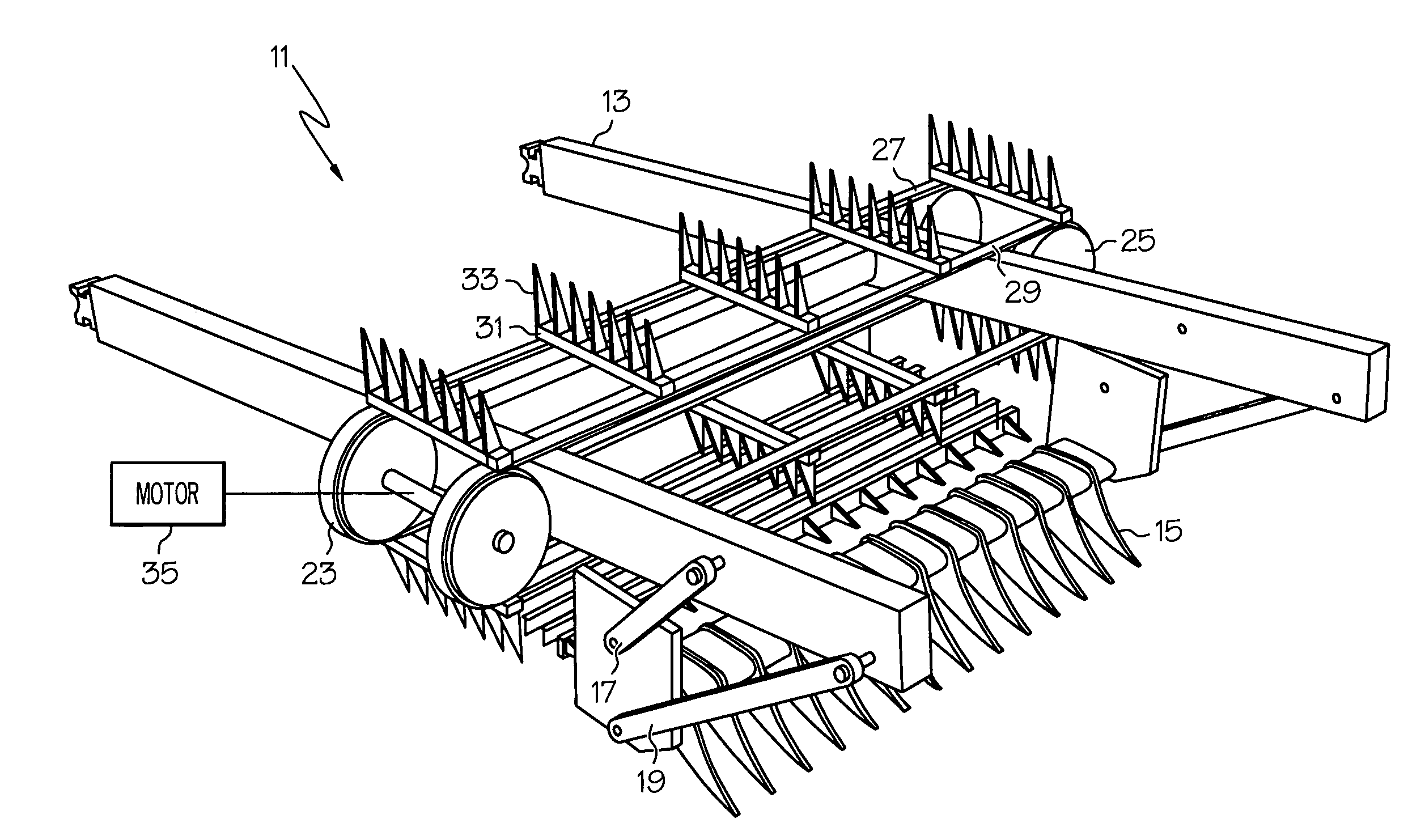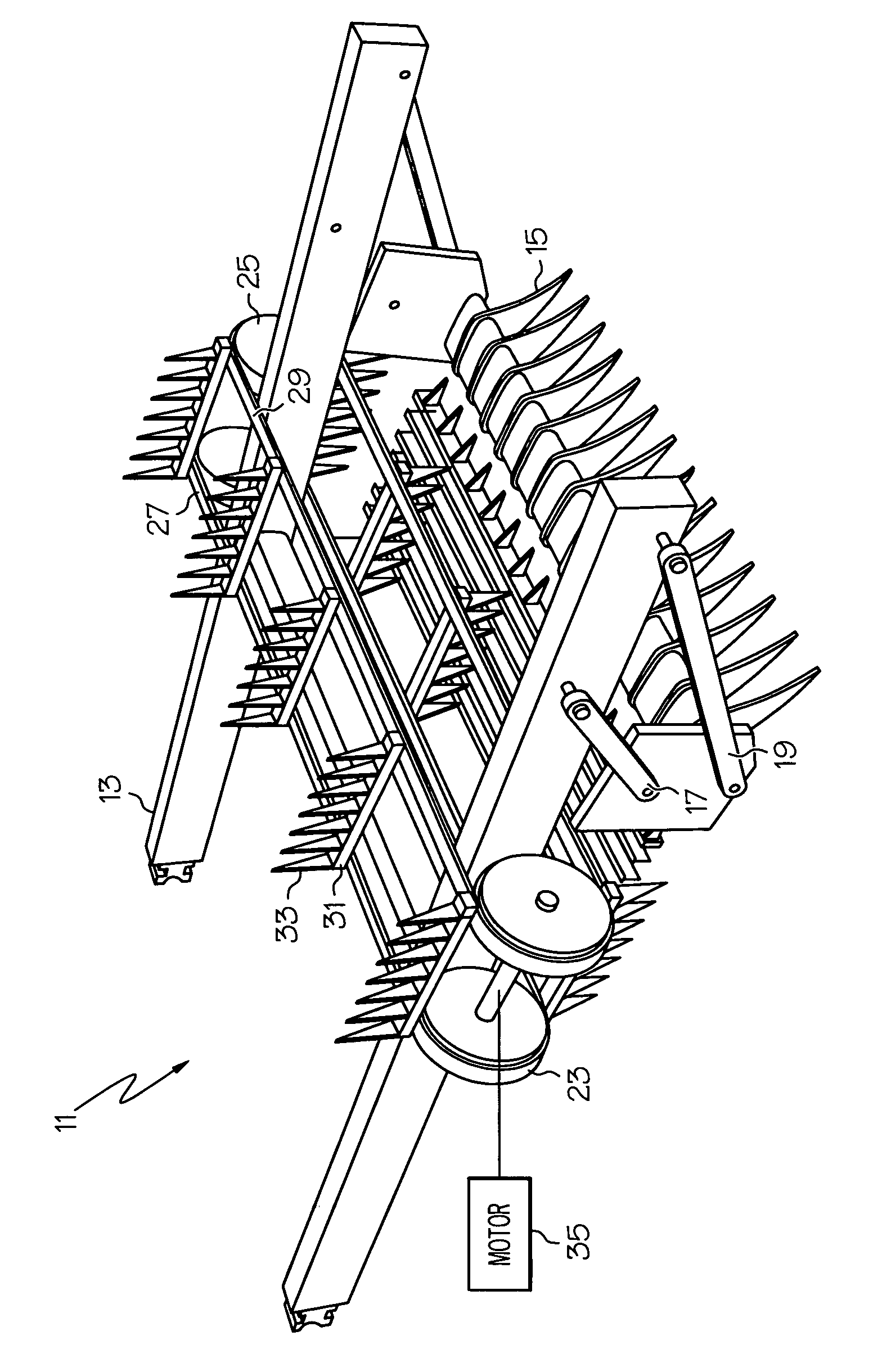Mine sifting attachment having transverse blades
- Summary
- Abstract
- Description
- Claims
- Application Information
AI Technical Summary
Benefits of technology
Problems solved by technology
Method used
Image
Examples
Embodiment Construction
[0009] The FIGURE shows the minesweeper 11 incorporating the invention. The minesweeper has a two-sided frame 13 adapted to be coupled to and pushed by a tractor (not shown). A rake 15 is pivoted from each side of the frame by respective pairs of coupling bars 17 and 19 of different lengths so that as the rake moves away from the frame to bury itself in the soil, the coupling bars rotate it to a less aggressive digging angle that prevents the rake from stalling the tractor. The minesweeper as thus far described follows the teachings of my U.S. Pat. No. 6,330,920 B1, the disclosure of which is hereby incorporated by reference.
[0010] In accordance with the present invention, there is provided improvement by substituting for the sifting basket of the prior art minesweeper a novel means for catching and sifting mines, soil, rocks and other objects buried in the soil passing over the rake 15, so that small amounts of vegetation and variances in soil conditions do not clog the catching a...
PUM
 Login to View More
Login to View More Abstract
Description
Claims
Application Information
 Login to View More
Login to View More - R&D
- Intellectual Property
- Life Sciences
- Materials
- Tech Scout
- Unparalleled Data Quality
- Higher Quality Content
- 60% Fewer Hallucinations
Browse by: Latest US Patents, China's latest patents, Technical Efficacy Thesaurus, Application Domain, Technology Topic, Popular Technical Reports.
© 2025 PatSnap. All rights reserved.Legal|Privacy policy|Modern Slavery Act Transparency Statement|Sitemap|About US| Contact US: help@patsnap.com


